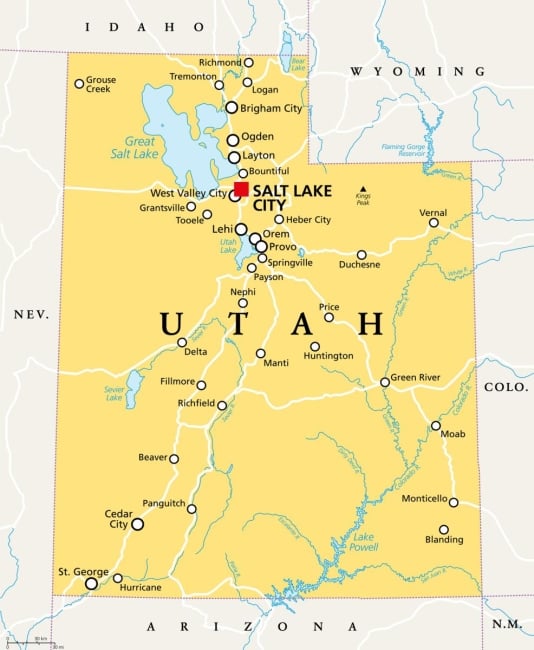You have /5 articles left.
Sign up for a free account or log in.

PeterHermesFurian/iStock/Getty Images Plus
You’ve probably been reading about the looming demise of U.S. higher education.
I don’t buy it.
Yes, college and university enrollment has fallen, decreasing by almost 7.5 percent since 2019, before the pandemic began.
Just six in 10 Americans say college is worth the time and money. And one-third of adult members of Generation Z say they tend not to trust higher education.
And yet, this fall the University of Utah admitted a record class of first-year students for the third year in row. We’re on track to grow our student body from just under 35,000 to 40,000 over the next five years, and we have plans to build 5,000 additional student housing units in the same time frame, transforming what traditionally had been a commuter campus into a campus village.
I have the benefit of leading a flagship research university in a growing Western state, with low unemployment, a booming economy, a young population and a persistently high birth rate. We’re still enrolling third-, fourth- and fifth-generation college students (the ones with 10 Advanced Placement classes on their transcripts, 4.0-plus grade point averages and 34s on the ACT).
But Utah’s success is more than a demographic windfall of overachieving students. At my university, we are actively working to adapt, to create new educational paths, to meet our students where they are. While those traditional students are a fundamental part of our student population, I want to bring a new cohort, a new type of student, to campus.
Let’s call them the ones with grit.
These are the students who worked part-time throughout high school to support their families. They are the ones who cared for younger siblings while their parents worked two or three jobs to pay the rent. More often than not, they are the first in their families to even contemplate applying to college. Most wouldn’t get through the application process, let alone the Free Application for Federal Student Aid, without some creative thinking, financial support and consistent mentoring.
At the David Eccles School of Business, our “grit” pilot project is called First Ascent Scholars. Students in this program come to Utah with significant financial need and, on average, lower GPAs, fewer AP classes and lower, or no, standardized test scores. Each scholar receives the equivalent of resident tuition, $9,000 for the 2022–23 academic year, and room and board, which ranges from just over $12,500 for students living on campus to $15,000 for those living off campus. They also benefit from ongoing mentoring and special First Ascent Scholars events, including travel, team-building exercises and a speaker series, and they give back through mandatory volunteer work.
While their number is still small—the program enrolls 10 to 12 new students per year—the proof is in the First Ascent Scholars’ results: they graduate and find critical workforce jobs at a higher rate than conventional students, over 95 percent. These students are the future of higher education in this country. Their life experiences combined with the knowledge and skills they gain on campus and in our classrooms will make the world a better place.
For university leaders like myself, reimagined enrollment programs like the First Ascent Scholars program are more than a student success experiment. Redefined educational pathways may be the key to our own survival. They also are our responsibility—to the students, faculty and staff who call our campuses home and to the communities around us.
The University of Utah recently joined the University Innovation Alliance, a coalition of 15 public research universities working to increase graduation rates among low-income students, first-generation students and students of color. I believe that working together, UIA members can break the “this is how we’ve always done things” R-1 mold and reimagine student engagement, development and success. I dream, quite realistically, about building out the First Ascent Scholars program at scale—providing the wraparound support currently offered to a few dozen students to all 35,000 students on my campus.
I was raised in Utah. Nevertheless, I still spent last summer traversing my state’s population cores and rural outposts, reacquainting myself with the people, industries and landscapes that make my state the dynamic and diverse place I love. At the same time, I recommitted my university to lead, to educate, to research and to serve the state around us.
The University of Utah must impact the lives of all 3.4 million Utahns for the better. This is why our geology, hydrology and atmospheric sciences researchers should lead—in collaboration with researchers at Utah State University—in finding solutions to the potentially catastrophic shrinking of the Great Salt Lake. Our academic medical center should provide exceptional patient care at dozens of clinics and hospitals across the state. This is why our education enterprise and University of Utah Health—in partnership with the state’s largest community college—are working to build a new medical and education complex in one of our state’s most underserved and underrepresented communities, just 30 minutes from our campus.
These academic initiatives are the very real stuff of survival in my state. The Great Salt Lake’s decline threatens to destroy habitat for millions of migrating birds, kill a $1.5 billion business and tourism engine for the state, and eventually send toxic dust throughout the population centers of Utah. All we have to do is resolve years of complicated water policy mixed with a multidecade drought. The socioeconomic and health disparities infusing the neighborhoods around our new hospital and classroom complex seem equally intractable. It will take everything we have—consistent investment, dedicated intellectual inquiry, stamina and grit—to find innovative and meaningful solutions to these challenges. But our future depends on it.
The University of Utah, and all higher education institutions, are up to the task. These community-based, on-the-ground initiatives are the right thing to do. They also just might rebuild trust in higher education and prove our relevance to students, parents, businesses and elected leaders in our states. By redefining what higher education means, reimagining who belongs on our campuses and rededicating ourselves to those we serve, universities will continue to provide hope and preserve education’s promise for coming generations of students.
There’s nothing more relevant than that.




